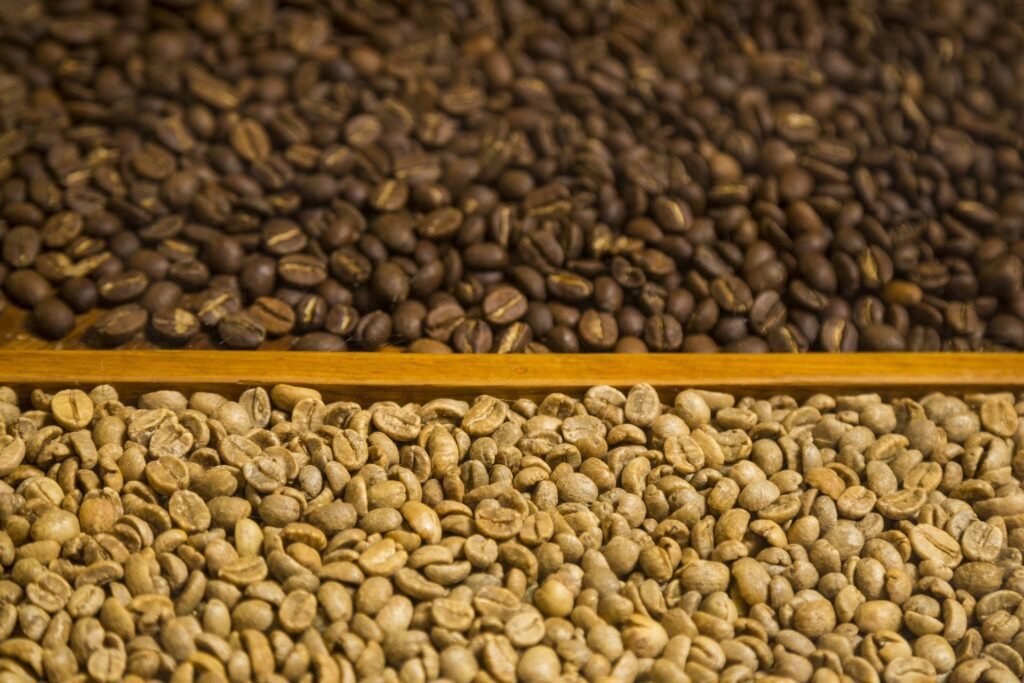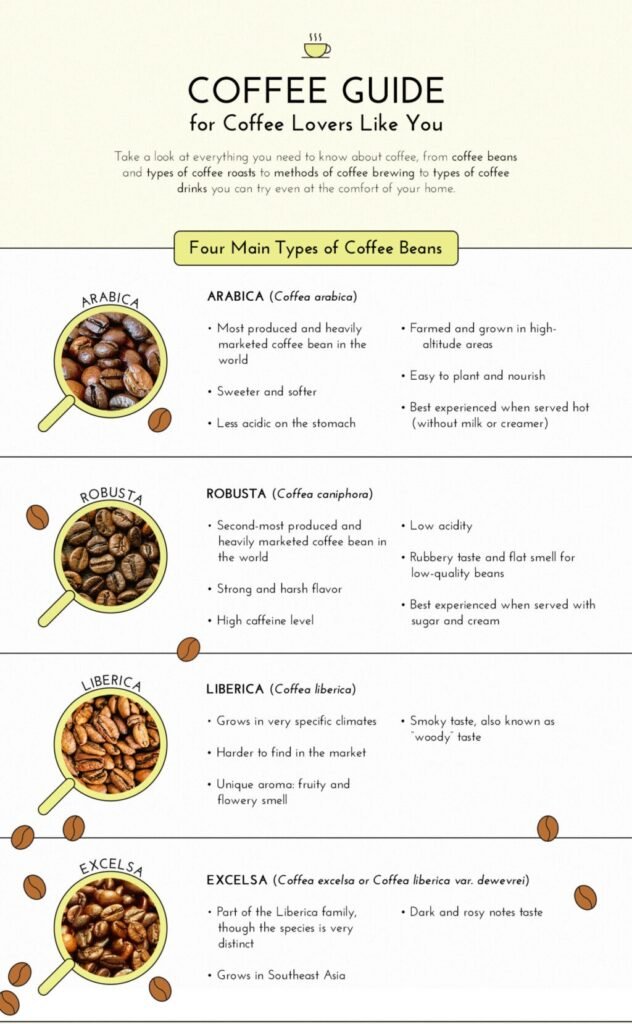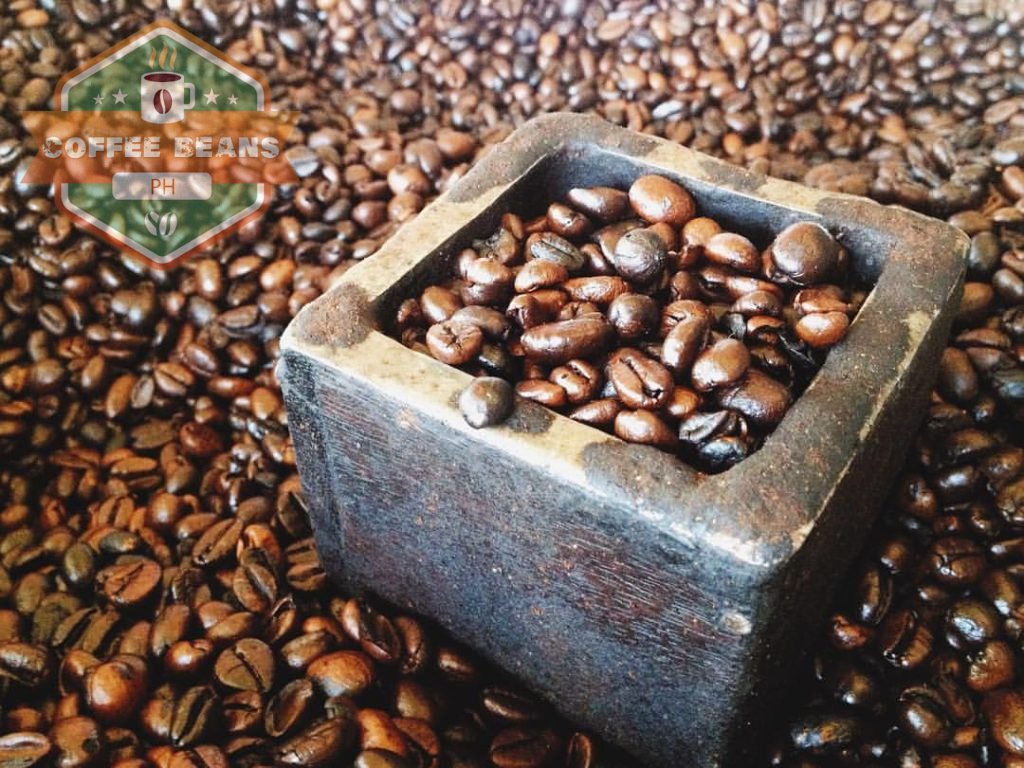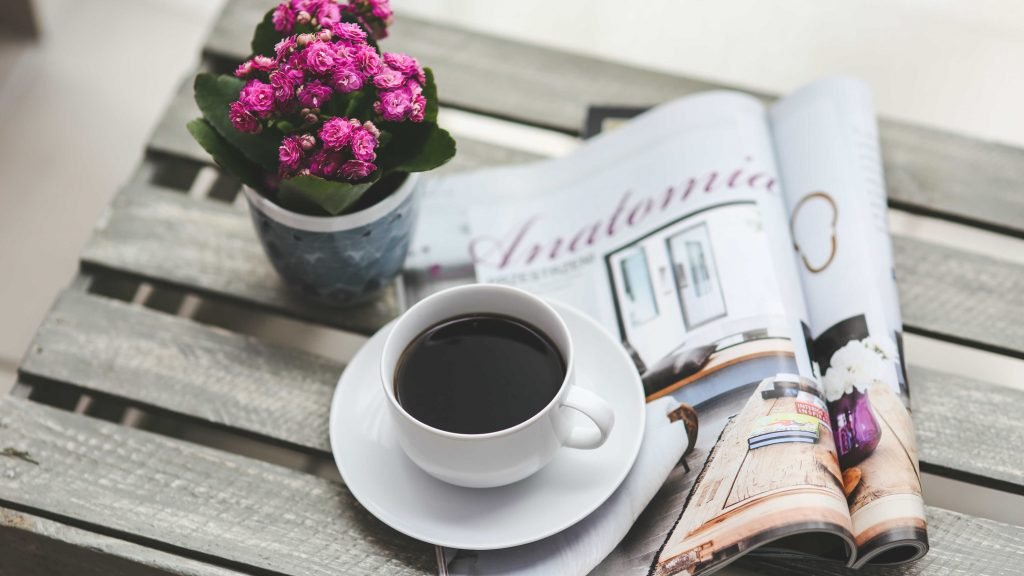
A cup of coffee or two for a young working professional like you. You’ve probably noticed how coffee has become a vital part of one’s daily life. From the moment you wake up to the time you call it a day, you’ve surely taken a sip from your coffee cup. Are there particular types of coffee that you prefer? Do you like it black? Hot or cold? With or without caramel on top?
This drink has become very popular in the country and worldwide. Billions of cups of coffee are consumed daily. Here in the Philippines alone, customers include heavy drinkers who consume coffee products thrice a week on average. This is higher than the regular coffee drinking average of twice a week.
Four Main Types of Coffee Beans
The demand for coffee has steadily increased, despite today’s state of affairs due to COVID-19. If you’d notice, coffee shops continue sprouting here and there. Online coffee shops are becoming a thing, too! So, whether you want to start your shop or are just a coffee lover, this article is for you. Here, we’ll delve into everything you need to know about coffee—from coffee types to various kinds of coffee beans and drinks.

1. Arabica (Coffea arabica)
Covering over 60% of the world’s coffee production, Arabica is considered the most produced and heavily marketed coffee bean in the world. Sweeter and softer than other coffee bean types, Arabica is known to have a more delicate flavor among the four. The majority’s favorite mark of Arabica bean? It’s less acidic on the tummy.
Arabica beans are farmed and grown in high-altitude areas where rain is steady, and the amount of shade is plenty. Mature arabica trees are easy to care for because they are just 6 to 15 feet tall and wide. However, this plant is delicate and requires considerable attention for pruning and caring.
With multilayers of flavors and aromas, Arabica coffee is best tasted on your front palate, where you can taste its salinity and sweetness. To fully experience the taste of arabica beans, serve it hot using the pour-over or drip coffee technique. Remember, it’s not ideal to do your Arabica coffee cold or with milk or creamer, which reduces the taste quality.
2. Robusta (Coffea caniphora)
Following the top famous and most produced coffee bean is Robusta. Its name is no accident, being known for its strong and harsh flavor. Its caffeine level is also extremely high—almost double that of Arabica—making the plant more resilient than the arabica species. Moreover, its high caffeine level acts as natural protection from insects, thereby reducing significant threats of diseases to the tree. Robusta, indeed!
Contrary to the Arabica coffee bean, Robusta is best sampled on your back palate since bitter notes are most evident in this area. Aside from this, high-quality Robusta beans have low acidity and smooth texture. The best Robusta coffee beans have chocolate and rum flavor hints. However, low-quality beans might taste rubbery and smell flat, resulting from a lousy climate and substandard practices. Robusta coffee beans are perfectly matched with cream and sugar. Robusta will not lose its flavor when added to these!
3. Liberica (Coffea liberica)
Rarer than the coffee beans above, Liberica grows in particular climates. This is the reason that among the types of coffee, this one’s harder to find in the global market. Despite this, however, Liberica played a significant role in coffee history, even culminating when it became significantly in demand. When a plant disease called coffee rust decimated approximately 90% of the arabica plants worldwide in 1890, there came to be a great demand for coffee. The government and farmers, thinking of producing a substitute, then turned to Liberica.
Still a US territory at the time, the Philippines was the first country to farm and sold this, and this decision helped the nation’s economy, for they were the only country to supply coffee then. Years later, the PH economy grew, and the government declared independence. As a result, the US enforced harsh economic measures and cut off supplies to the country. This ultimately led to the downfall of the Liberica coffee bean in the global marketplace. Until now, no other country could match the production the Philippines once pioneered.
Though more significant than other coffee bean types, Liberica beans are the only ones with irregular shapes. Besides, it has a unique aroma, playing around with fruity and flowery smells. On the other hand, the flavor holds a smoky taste, or what many people call a “woody” taste.
4. Excelsa (Coffea excelsa or Coffea liberica var. dewevrei)
The last of the four main types of coffee beans are Excelsa. Although it is considered part of the Liberica family, the Excelsa species is distinct. Having an almond-like shape, this coffee bean type grows mainly in Southeast Asia. Its taste? Dark and toasty notes. Carefree coffee drinkers must turn to this if they want to try something unique and distinct.
Types of Coffee Roasts
Roasting coffee involves heating raw beans into the brown—light to dark—beans we know. This process reveals the aroma and flavor locked inside a green coffee seed. There are four color types: light, medium, medium-dark, and dark. As the coffee bean gets darker, it loses its original flavors, and the caffeine level lowers.
- Light Roast
- Color: Light brown
- Oil on bean surface: None
- Acidity: Snappy High
- Caffeine level: Retained most from the coffee bean
- Flavor: Retained from the original coffee bean flavor
- Medium Roast
- Color: Medium brown
- Oil on bean surface: None
- Acidity: Balanced level
- Caffeine level: Medium
- Flavor: Balanced flavor
- Medium-Dark Roast
- Color: Dark brown
- Oil on bean surface: Some
- Acidity: Medium level
- Caffeine level: Medium to low
- Flavor: Full, heavy flavor
- Dark Roast
- Color: Black
- Oil on bean surface: Yes
- Acidity: Low level
- Caffeine level: Low to very low
- Flavor: Smooth mellow flavor
Start and End Your Day with Daily Grind Coffee Shop
Want to try these types of coffee? Visit Coffee Beans PH. We are located at Lipa City Batangas. You may also grab a cup of coffee or two using the foodpanda app. We also offer pastries to partner your favorite coffee. What are you waiting for? Visit us or call us now.





